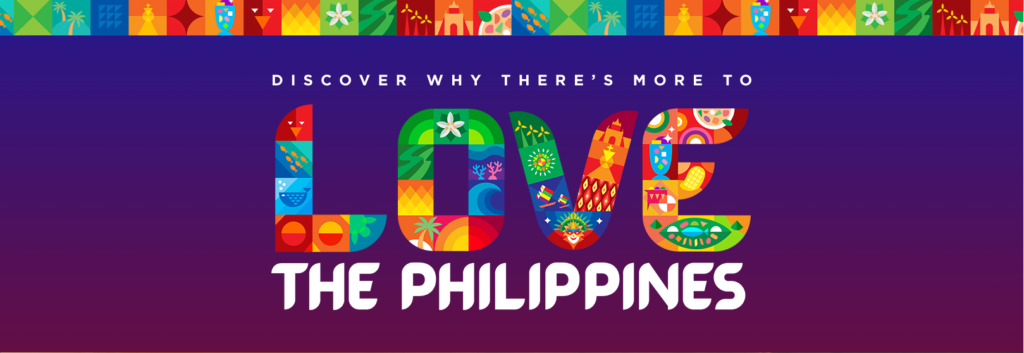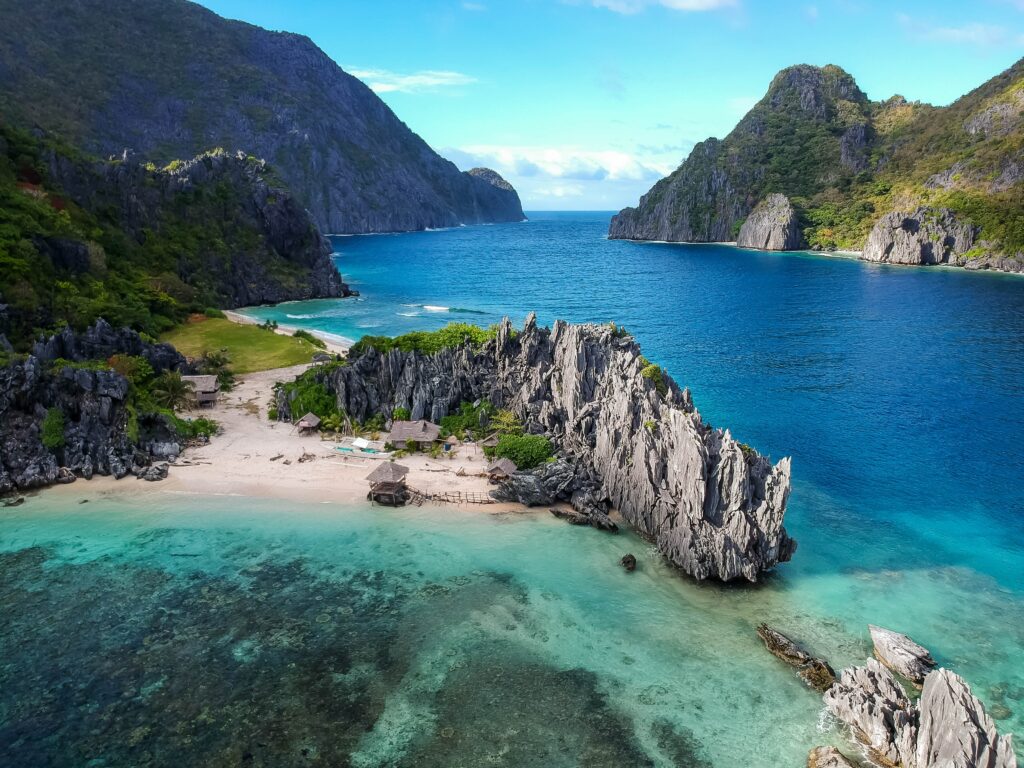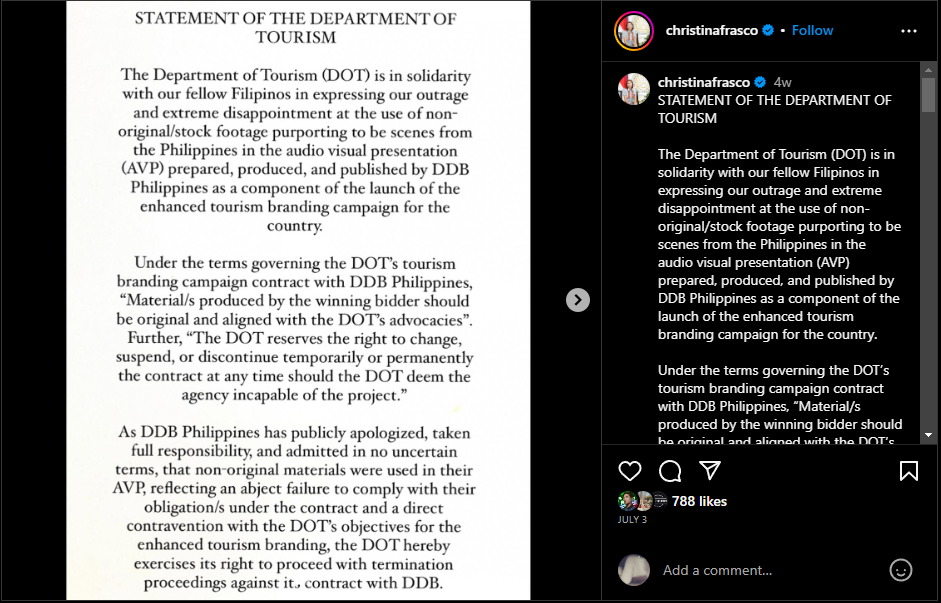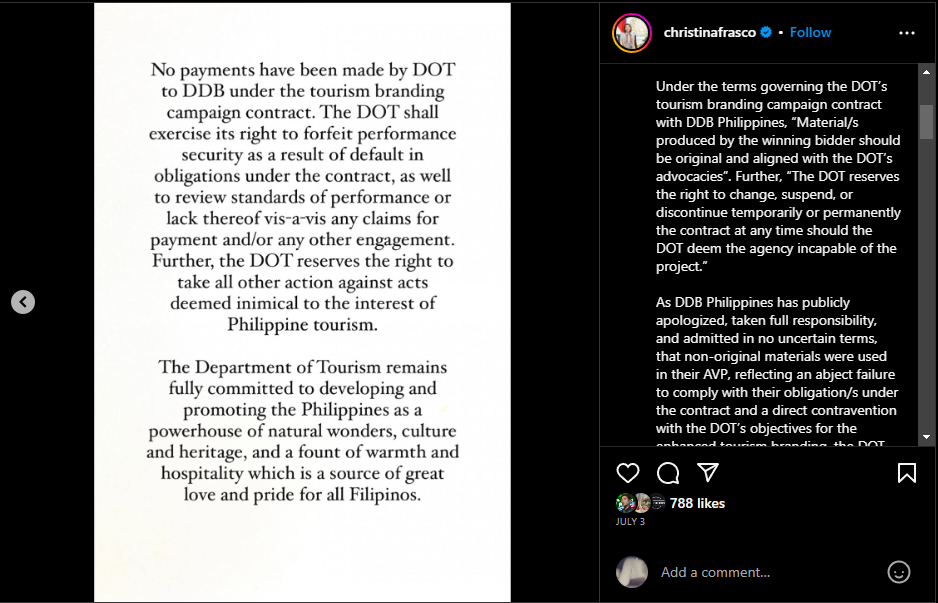
MANILA, Philippines – The Department of Tourism (DOT) is under fire following the release of an advertisement as part of the new 49 million PHP (approximately $880 000 USD) “Love the Philippines” tourism campaign. The 2-minute promotional video featuring footage from Dubai, Switzerland, Thailand, and Indonesia was made by DDB Group Philippines and launched on June 27 with President Bongbong Marcos in attendance. Questions quickly emerged as soon as the video was released on Facebook, with fact-checking teams confirming their suspicions. While the video was quickly removed, the damage had been done. Humiliation followed public outrage over what felt like a dull slogan, as the DOT graduated from their “It’s More Fun in the Philippines” campaign after eleven years.

Tourism Secretary Christina Frasco officially retired the old slogan last month, introducing the new “Love the Philippines” as the centerpiece of the Philippine tourism campaigns and claiming that it was a necessary change following shifting tourist preferences amid the new post-pandemic context. According to Frasco, the new slogan highlighted the country’s readiness to share a story of the many reasons to love the Philippines, rather than the previous branding which focused on the Philippines being a ‘fun’ destination. However, the new slogan was met with negative responses from critics who considered it to be demanding, underwhelming, ungrammatical, and boring.
The DDB Group apologised for the use of stock footage, seeing it as a highly inappropriate oversight that undermined the DOT’s objectives. However, DDB Group also explained that the footage was part of “mood videos” which are an industry standard practice. Since then, the DOT has terminated its contract with the agency and published an apology on social media, taking responsibility for the mishap. It was also confirmed that no public funds were given to DDB Group.


Indonesian Tourism Minister Sandiaga Uno had a much softer reaction over the use of Indonesian rice terraces in the campaign, perceiving it as an unintentional mistake due to human error that did not require an emotional reaction. He highlighted how showcasing the breathtaking landscapes in Indonesia made Indonesians proud while seeing the need for the promotion of ASEAN as a single destination.
Despite the apologies, many have questioned the department’s ability to identify the landscapes of their own country, given the large number of people who had seen the ad without realising that it was from overseas. Actress Bela Padilla shared her insights on the fiasco, suggesting for a more holistic campaign style involving local content creators for a more genuine, heartfelt, and truly local feel.

After all the backlash, many suggested the DOT return to its ‘fun’ image rather than their new focus on ‘love.’ Yet in the most recent forum, Frasco did not directly discuss the matter. Her repeated incorporation of and attempt to highlight the story of love for the Philippines indicated the likelihood that the slogan is here to stay.

This rebranding blunder is not the first time the tourism department was put under scrutiny. Previously, the “Pilipinas Kay Ganda” campaign was seen to be stolen, lifted from past Polish tourism campaigns. Similarly, the “It’s More Fun in the Philippines” has been condemned for being a copycat of the “It’s More Fun in Switzerland” tourism campaign. Recently, more people saw the parallels between the 2017 “Experience the Philippines” campaign and the South African “Meet South Africa” campaign, which had striking similarities and conveyed blind men as protagonists.
The Philippine tourism industry had undoubtedly taken a huge toll due to the pandemic. And with the majority of the world slowly going back to normal, the DOT cannot afford to lag behind. Last year, the Philippines saw 2.7 million tourists in the country, a 68% decline from pre-pandemic levels in 2019. With so much on the line, it appears as though the DOT has three options: return to its previous “fun” focus, push through with the contentious “Love the Philippines” campaign despite backlash, or restart and reinvent a new campaign involving more local perspectives.